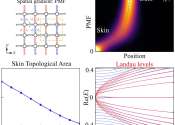Getting more information by measuring faster and averaging less
For signals barely larger than the noise in a system, measurement is generally a trade-off between speed and precision. Averaging over several measurements reduces the influence of noise but takes (a lot of) time. That could ...









